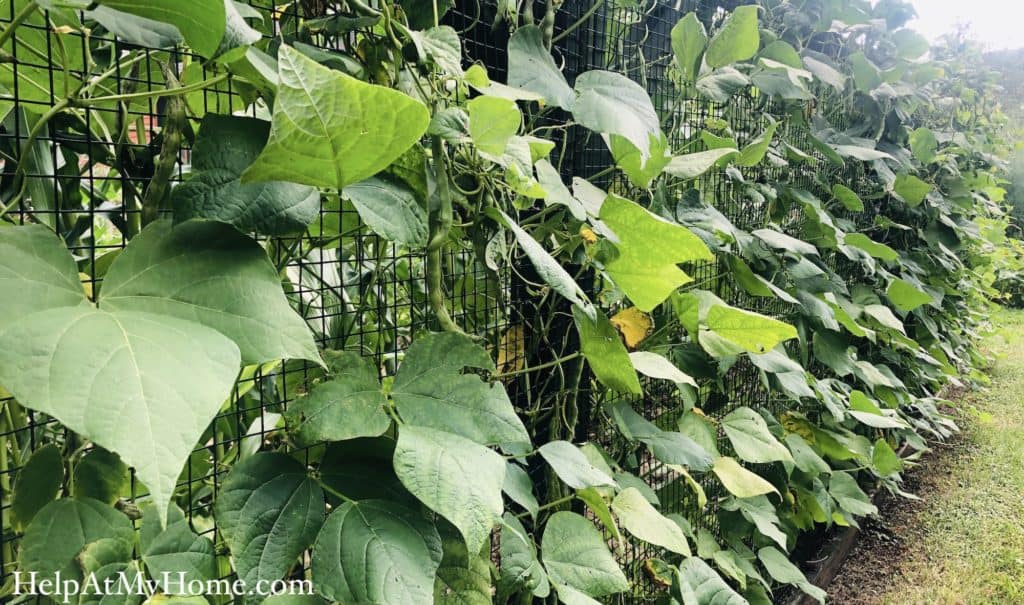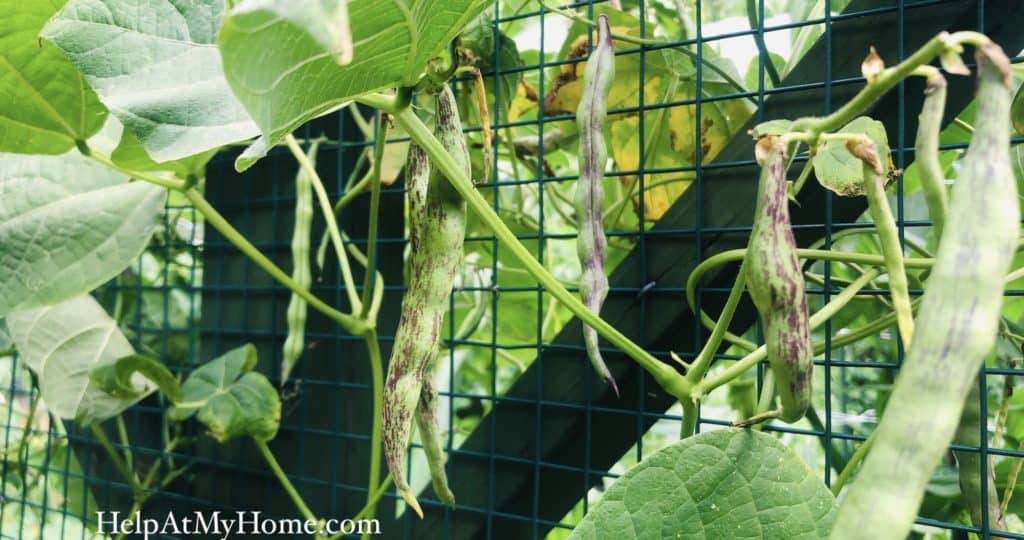Rattlesnake pole beans, usually just called rattlesnake beans, are one of the best small- to mid-size gardening plants for most of the United States. These beans are forgiving to grow, easy to maintain, and prolific producers. They also look great, offer lots of coverage, and even can create a privacy wall if placed properly.
Rattlesnake Bean Basics
Rattlesnake pole beans are a plant that produce lots of tasty string beans as well as drying beans late in their life. The speckled beans produce similarly speckled seeds that are delicious and versatile when cooked.
Rattlesnake pole bean plants can grow in a wide variety of conditions, including very hot areas. They are also cold-resistant enough to be grown in the Northeast United States and similar climates.
Rattlesnake beans are sometimes called “preacher beans,” typically in the southern United States. They are called “rattlesnake” beans because the pattern of the mature bean casing looks a bit like the mottled scales of a rattlesnake.
Planting Rattlesnake Beans
Rattlesnake beans need mid- to high levels of sun as well as moderate wetness and moderate warmth. They are highly heat-resistant so they grow well in the southern US but will tolerate all the way up to Maine — about zones 8a through 5a. The beans will tolerate sandy soils, don’t have major problems with rust or bugs, and are drought-resistant.
Planting should wait until after the last frost and when soil temperature is a reliable 55 degrees or higher. Temperatures this cold will extend the growing time so you might as well wait until they are a bit higher, but this won’t harm the plants. Optimum temperatures for the beans is above 80 degrees with full sun.
These beans are aggressive climbers and need a open fence, net, or trellis to grow up. They will grab on anything, including each other, so it’s best to keep them away from corn, sunflowers, and anything else they can latch onto. Maximum growing height is about 10 feet, but a 7-foot fence is typically sufficient. At the top they will either droop down and climb again or multiple vines will support each other and continue their upward growth.
The beans need a lot of room as they are leafy and strong growers. You can place them adjacent to a growing structure and about 1 inch deep and 12 inches apart from one another for optimize growth and easy picking. If you are pressed for space you can plant them as close as 6 inches apart but the resulting plants will be tangled and bean picking will be much more challenging (it’s easy to miss beans in the tight foliage).
Direct planting is best and the plants don’t transplant well.

Growing Rattlesnake Beans
Rattlesnake beans will be a bit touch-and-go in the Northeast US if planted too early, but they will survive a light frost so long as the plant hasn’t entirely broken the surface yet. Within a few weeks, as soil temperatures increase, the beans will slowly grow leaves and start to get taller. Ones vines form the plants will quickly go from about 6 inches tall to the height of their fence (or anything nearby) in about a month.
Rattlesnakes beans will benefit by moderate but regular watering early in their life and then 2x weekly soaks as the plant grows.
Growth times will vary greatly based on:
- when they are planted
- where you are located
- available sunlight
- at what stage you want to harvest the beans
But expect around 70 days to see beans, possibly more if you start early. The beans get to be about 6 inches long at their maximum and you will know they are past the stage of picking for eating the entire thing when they have past about 5 inches and/or the pod becomes bumpy with the beans as opposed to smooth.
It’s OK to fertilize the beans, but too much nitrogen will promote lots of plant growth as opposed to bean production. Fertilizer during the bean growing stage is not necessary for the home grower with average to good quality soil.
The bean plants will produce small, purple flowers that will be pollinated by bees, bugs, and hummingbirds.
Bean production will go from early summer to early fall in a continuous harvest, so you will be able to eat the beans through much of the summer and harvest season, so long as the weather doesn’t get too hot or dry. This will slow down production, but bean growth should return as conditions improve.
Yield is high and even just 10 linear feet of the beans will produce multiple meals worth of crop.

Eating Rattlesnake Beans
These beans can be eaten throughout their lifecycle, which is one of the things that makes them so great for small garden and feeding your family.
Rattesnake beans can be eaten young as green beans (sometimes called snap beans). The similar to a grocery store string bean in size but more tender and a bit sweeter. The beans are not great raw (like sugar snap peas), but are excellent when the entire bean is sautéed while they are young. These beans can range from about 3 inches up to 6 inches long, with the pods being quite hearty when at full length. When the beans are long they will toughen and produce a removable string on both sides. The key is to pick them before this point unless you want shelling beans.
As the beans get older the outer shell will toughen and isn’t eaten. At this stage the beans can be left on the plant to dry or can be picked and then cooked as fresh beans, frozen, or dehydrated. This is the classic usage of rattlesnake/preacher beans. They need to be cooked to soften, but the result will be a tasty, meaty bean that holds up well to soup soup and even chili.
FAQs
What are rattlesnake beans?
Rattlesnake pole beans are an heirloom bean varieties the grows up walls, stakes, nets, and trellises that are an easy-to-grow type of climbing (or “pole”) bean. The entire beans can be eaten as you would string beans or they can be grown to maturity, shelled, and then eaten as beans. Rattlesnake beans are green but they become camoflauge-like with purple on green as they mature.
What’s the best fertilizer for rattlesnake beans?
While fertilizer is not strictly necessary, we’ve had good luck with an organic soluble fertilizer that isn’t too heavy in nitrogen. If soluble isn’t right for you then Jobe’s and Miracle Grow both have good organic fertilizers that we’ve used on rattlesnake beans. Make sure to not use a nitrogen-heavy fertilizer too close to bean production as it will push the growth of foliage, not beans.

